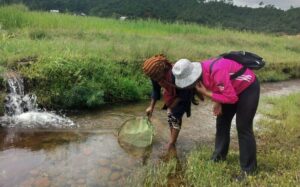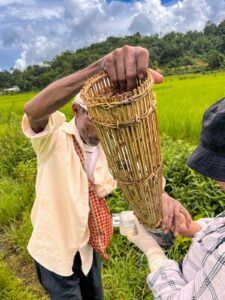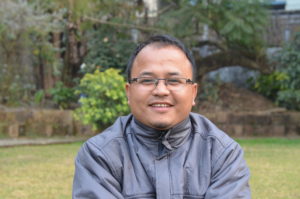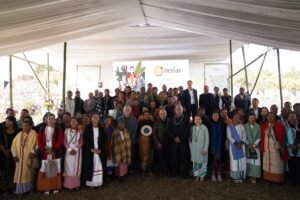Indigenous Peoples are the custodians of a vast diversity of unique cultures, traditions, languages, knowledge systems, and biodiversity. They are the living proof of human resilience and for thousands of years, have sustained themselves by living in harmony with nature.
For the state of Meghalaya, the indigenous matrilineal communities (Khasi-Jaintia and Garo) stand as a testament to this. The state, which is a part of the Indo-Burma biodiversity hotspot, has been the home of these indigenous communities for millennia. They have been relying on the forests to gather and produce food in a sustainable manner that demonstrates the traditional value of caring, sharing, and living in harmony with nature.
As a non-profit organisation, NESFAS since its inception has worked with Indigenous Peoples from Meghalaya and Nagaland in strengthening their local food systems and biodiversity to ensure food security and well-being.
Since biodiversity forms the backbone of the food systems of these communities, the community’s reverence of their forests mustn’t end with just their traditional knowledge. There is also a need for this knowledge to be documented and understood from a scientific point of view to ensure the sustenance of the biodiversity they depend on. It is also crucial that such valuable knowledge be transmitted across generations.
Identifying the need for such intervention among the Indigenous Communities of Meghalaya, NESFAS, in collaboration with the Meghalaya State Biodiversity Board, launched a project “Protection of forests in Meghalaya by adopting participatory, gender centric and equitable approaches” in June 2022 with the support of the Nature Conservancy (TNC).
As part of the project, Biodiversity Management Committees (BMCs) have been strengthened and their capacities were built to create the People’s Biodiversity Register (PBR), a document containing comprehensive information on local biodiversity along with related traditional knowledge and practices of a particular village. This participatory documentation project by NESFAS was brought forth in confluence with the Biological Diversity Act of India, 2002.
The project was launched with the initial technical support of MS Swaminathan Research Foundation (MSSRF) to ensure communities continue to value and conserve the rich biodiversity around their landscapes, sustained by their traditional socio-cultural knowledge and practices. NESFAS believes that the adoption of PBRs will play an important role in documenting this rich knowledge.
Through this project, a total of 71 BMCs in the rural communities of Meghalaya were mobilized to document local biodiversity and its related indigenous knowledge in the form of People’s Biodiversity Registers, especially focusing on species that have often been ignored and marginalized.
The BMCs in these communities, along with the support of technical teams specialising in Botany, Ecology, Zoology and GIS, were tasked with the documentation and collection of data. The documented data which included associated traditional knowledge of the wild biodiversity and unique traditional knowledge of these communities were further validated in the presence of the community before finally computerising it for the PBR.
“The PBR project has brought a lot of positive outcomes for our community. This repository of our biodiversity will ensure that our knowledge about our surroundings will be passed down to our children and grandchildren,” shared Krimchi A Sangma, a BMC member from Misimagre, West Garo Hills.
Along with the standard Participatory Rural Appraisal tools for PBRs, unique tools such as vegetation sampling, bird-watching, and camera traps were implemented as part of the PBR documentation in these communities. This was done to identify the diversity of flora and fauna in these communities with the data collected used to gauge which species needed conservation.
Balgra G Momin, a BMC member from Sasatgre, West Garo Hills believes that the implementation of PBR has helped the younger generation of the community find a newfound understanding of the environment around them.
“Through PBR documentation, we have come to know the local names of many birds and animals and understand how our ancestors named them based on their physical appearance, colour, sound. Some names have lots of reverence in terms of the beliefs and stories associated with the bird or animal.
Spending time with the knowledge holders from our community has also helped us come to know of a lot of plant species we didn’t know before. Many of these plants also have been used as medicinal herbs in the community.” Balgra added.
The aim of the participatory documentation has been to enable the indigenous communities to make sustainable use of their biodiversity, protect their intellectual property, and exercise customary rights over these tangible resources.
In the long run, this effort will significantly contribute to increased knowledge on accessing quality seeds for local farmers, creating livelihood opportunities, and promoting the conservation of biodiversity.
“The PBR project has made communities realize the tantamount need to wake up and protect our biodiversity because the lives of our future generations depend on it,” shared Kong Rosilian Khymdeit, BMC member, Khweng, Ri-Bhoi.

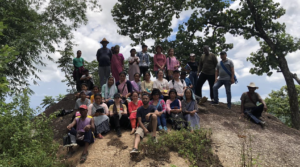
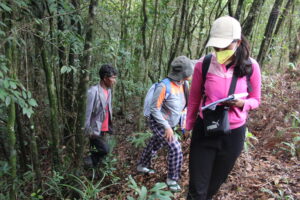 .
. 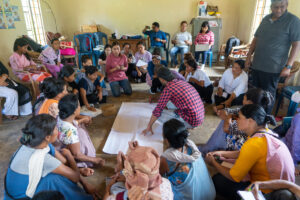
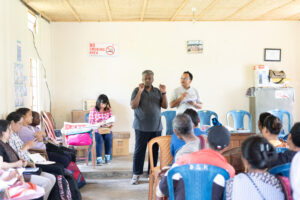 .
. 